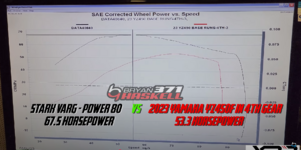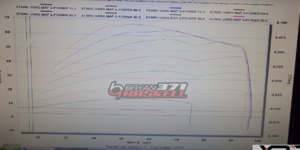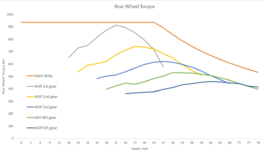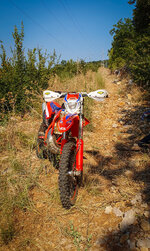Erwin P
Well-known member
- Likes
- 149
- Location
- Netherlands
Is there a significant range to be won with taller gearing and thus lowering the RPMs?
I do 2 hrs races with some of them actually having some quite long fast sections on them where we reach over 60 km/h.
I was wondering if adding some taller gearing would help me push another lap out of the battery since now i can do 1-1.5 hrs of the 2 hrs race.
Then i move to my 300 2 stroke and switch back to the Stark as soon as the generator put in enough juice for the rest of the race. The Stark is actually 30-45 seconds faster on 7-12 minutes laps so the second pitstop of around 45 seconds is well worth it. Would be cool though to get an extra lap out of it and thus even have a bigger performance gap over the total race.
Also i might move over to a Stark EX at the end of the year wich would be doing OTR events with fast open sections where battery capacity would be at it's very limit. Having a few percent more range would be a huge peace of mind.
I do 2 hrs races with some of them actually having some quite long fast sections on them where we reach over 60 km/h.
I was wondering if adding some taller gearing would help me push another lap out of the battery since now i can do 1-1.5 hrs of the 2 hrs race.
Then i move to my 300 2 stroke and switch back to the Stark as soon as the generator put in enough juice for the rest of the race. The Stark is actually 30-45 seconds faster on 7-12 minutes laps so the second pitstop of around 45 seconds is well worth it. Would be cool though to get an extra lap out of it and thus even have a bigger performance gap over the total race.
Also i might move over to a Stark EX at the end of the year wich would be doing OTR events with fast open sections where battery capacity would be at it's very limit. Having a few percent more range would be a huge peace of mind.




